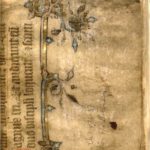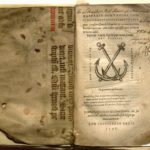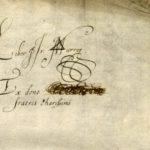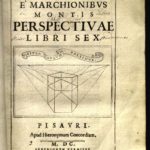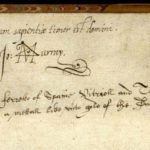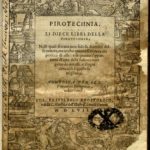52 Weeks of Fantastic Bindings: Week 4
On the trail of the elusive John Murray
This weeks fantastic binding is included in this longer post about the search for an unknown former owner, we hope you enjoy!
Towards the beginning of my work here at St Andrews I was presented with a provenance puzzle which I still haven’t sufficiently worked out. I first came across the very distinct signature of John Murray in the 1576 R. Jugge printing of Richard Eden’s translation of Martin Cortes’s The arte of navigation (TypBL.B76JC). This item also bears an earlier inscription on the back free endpaper: “Liber Thomae Newtonij Cestreshyrij 1578” (Newton, Thomas, 1542?-1607, translator and Church of England clergy). Murray’s signature is very distinct, always using the pentagram to sign the “M” in his surname and always signing (save one example) with the motto: “Initium sapientia timor est domini” (“The beginning of knowledge is fear of the Lord” [Proverbs 1:7, 9:10, Psalm 111:10 and Job 28:28]), which is also the University of Aberdeen’s motto.
After doing some research, I found four other volumes that bear this unique signature: TypBL.C05BL (Thomas Lydiat. Praelectio astronomica de natura coeli & conditionibus elementorum. London: Ioannes Bill, 1605), TypIV.B58TB (Vannoccio Biringuccio. Pirotechnia. Venice: Comin da Trino for C. T. de’ Navò, 1558), TypIP.C00CM (Marchese Guidubaldo del Monte. Guidiubaldi è Marchionibus Montis Perspectiuae libri sex. Pisauri: Apud Hieronymum Concordiam, 1600) and TypFP.B48DC (Gasparo Contarini. Gasparis Contareni cardinalis. ampliss. Philosophi sua aetate… Paris: per Nicolaum Diuitem, 1548). The common thread that links each of these volumes is the subject matter: science and physics. In fact, Murray occasionally adds a comment after his signature: the inscription found in TypIV.B58TB (pictured below) has “With Saturne Ferrotto of Spaine Vitrioll and Tutia May be mad a mettall like vnto gold of the Ducate” inscribed after his name, and TypBL.C05BL has “Mercuri Trismagestus Appellationes quadam falsae hominess perturbant et decipiunt” added in his hand.
- A fragment of a 14th or 15th century illuminated manuscript, probably a breviary, used as a fly-leaf for TypFP.B48DC.
- Verso of the manuscript fly-leaf and title page of TypFP.B48DC, with the distinctive signature of John Murray.
- The inscription of John Murray on the front fly-leaf of TypIP.C00CM, as a gift from Edward Hales, whose name was written in gold and then erased.
- Title page of TypIP.C00CM, a 16th century work on perspective.
- The signature of John Murray on the front fly-leaf of TypIV.B58TB, with an alchemical inscription.
- Title page of TypIV.B58TB, a 16th century work on metallurgy and pyrotechnics.
The volumes that retain their contemporary bindings are also very similar: TypIV.B58TB, TypFP.B48DC and TypBL.C05BL are all bound in limp vellum wrappers, with no evidence of ties or fore-edge decoration. TypFP.B48DC also features a fragment of a 15th century illuminated Latin manuscript (probably a breviary) used as contemporary front fly-leaf (pictured above) and a fragment of a 13th or 14th century decorated Latin manuscript used as contemporary back fly-leaf, hence its inclusion in the 52 weeks of Fantastic Bindings.
The only other name appearing in his inscriptions is Edward Hales in TypIP.C00CM (pictured above), whose name is inscribed in gold leaf (and described as “fratris charissimi”), and then erased later in ink. Sir Edward Hales is a name that is traceable, and may finally provide at least some tangible link to Murray. Hales was a Catholic convert and a member of the privy council under James II, Lieutenant of the Tower of London, he assisted James II’s escape attempt in December of 1688, and eventually was made the Earl of Tenterden in Kent, Viscount Tunstall, and Baron Hales of Emley, by patent 3 May 1692. If this is the same Hales which is listed as donor in TypIP.C00CM, then this would mean that our John Murray was probably collecting towards the last quarter of the 17th century.
Nothing else has come to the surface on the elusive John Murray, and it is only the name and the inscription which hints at a northern connection, but if you see this distinct signature in your library, let us know!
–DG
